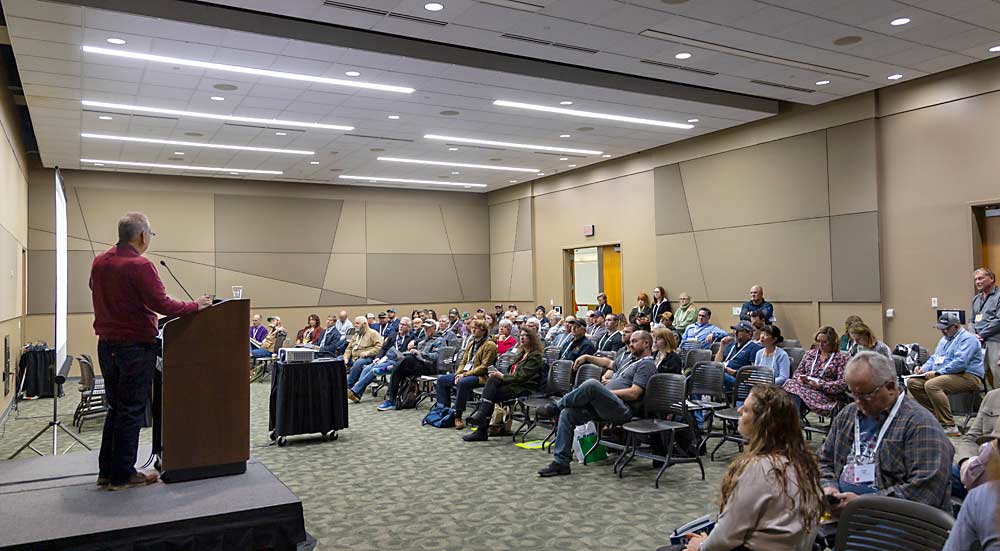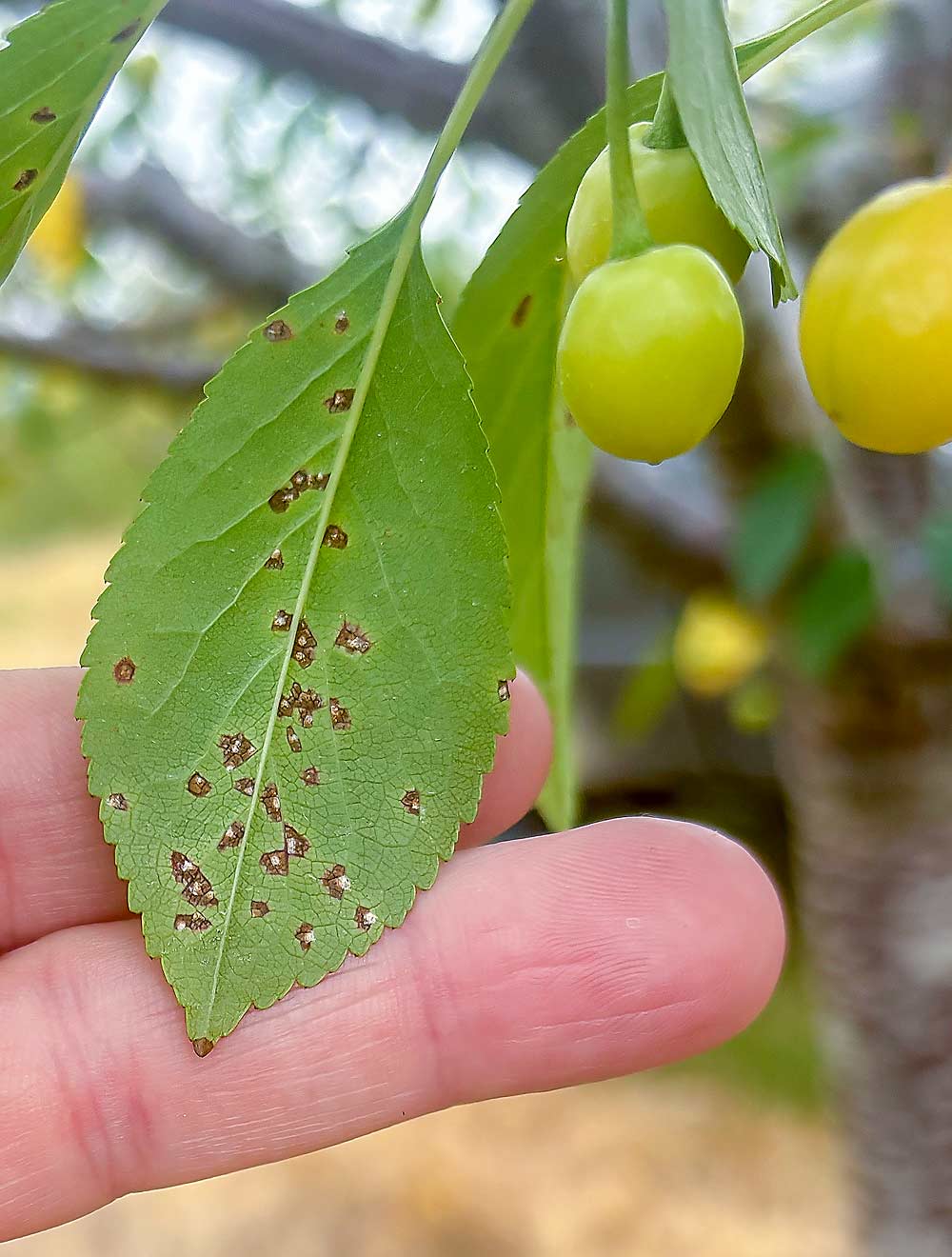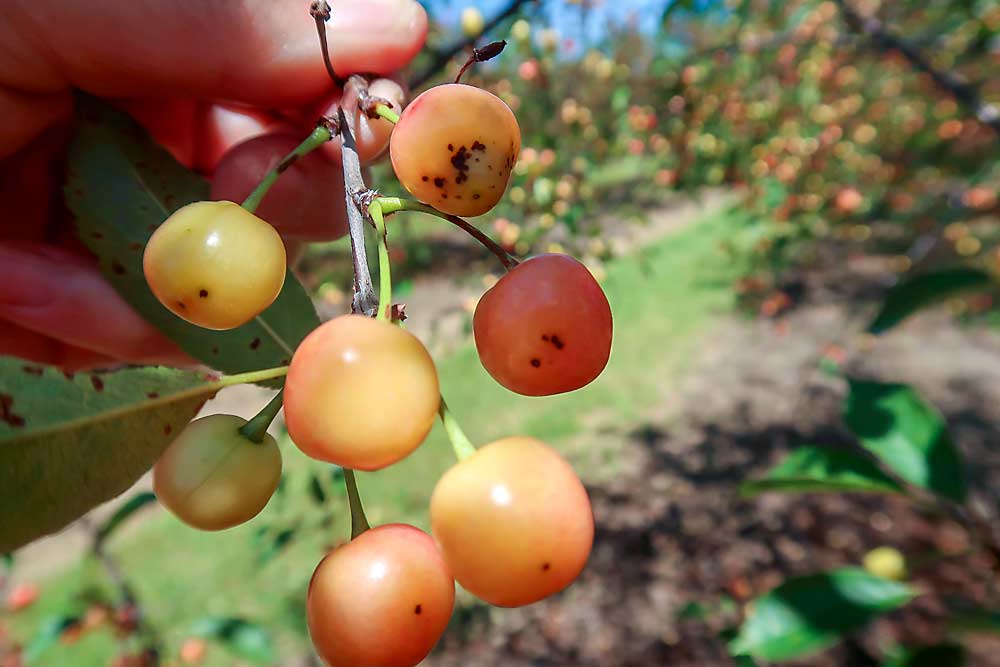—by Matt Milkovich

A dearth of new management tools for cherry leaf spot has many Michigan tart cherry growers turning to a tool they abandoned years ago: copper fungicides.
Researchers offered insights into cherry leaf spot, a fungal disease that causes premature defoliation, at the Great Lakes Fruit, Vegetable and Farm Market EXPO in December. Often described as the toughest disease challenge facing the Michigan tart cherry industry — which relies almost exclusively on Montmorency, a highly susceptible variety — cherry leaf spot erupted in a major outbreak last year, contributing to fruit quality problems in the state cherry crop.
Growers can’t afford another season like 2024, and they “desperately need” new fungicide chemistries, grower and retired Michigan State University extension educator Jim Nugent said during a panel discussion.
But fungicide options, if anything, are dwindling, driven by cherry leaf spot’s penchant for developing fungicide resistance. SDHI (succinate dehydrogenase inhibitor) fungicides, also grouped as FRAC 7, used to provide great control, until the pathogen started overcoming them. Strobilurin single-site fungicides still work but shouldn’t be overused for fear of resistance developing. Biocontrol products have been a bust in MSU trials, and manufacturers aren’t developing new fungicides specifically for cherries, said MSU tree fruit pathologist George Sundin.
“The hammers aren’t available anymore,” he said.

Michigan growers have been relying on broad-spectrum fungicides such as Captan (dicarboximide) and chlorothalonil to combat cherry leaf spot, but the Environmental Protection Agency keeps tightening the rules for their use, Sundin said.
That leaves copper.
Michigan growers stopped using fungicides containing copper compounds decades ago, when synthetic fungicides became widespread. But MSU researchers are encouraging growers to take up coppers again because they’re one of the few tools available that can provide effective control. Sundin said growers have been hesitant to use copper fungicides because of phytotoxicity fears — the products can cause leaves to turn yellow and drop.
MSU research has demonstrated that copper can indeed lead to phytotoxicity; however, despite that, it has not shown any long-term detriments to tree health, crop yields or fruit quality. In an ongoing greenhouse trial, MSU researchers are dosing potted Montmorency trees with copper sprays to better understand the phytotoxicity parameters, Sundin said.
Grower Gerrit Herrygers had concerns about using copper sprays, but 2024 was an “emergency, break-glass kind of year,” he said, so he decided to add copper to his management program. Now, he thinks every tart cherry grower should apply copper.
The 2024 outbreak was so bad that, for the first time, Sundin saw cherry leaf spot symptoms on the fruit itself, not just the leaves.

Rains were heavy and winds were strong last season, and when the first big leaf spot infection hit on Memorial Day weekend, it caught many growers off guard. Good spray coverage was difficult to achieve, said Pete Nelson, an industry consultant.
Periods of consecutive rainfall are increasing in Michigan, which will make cherry leaf spot more active and spraying more difficult. It’s a “complete whammy of problems,” Sundin said.
But the situation isn’t completely dire. A spray program of copper, Captan and chlorothalonil can provide excellent leaf spot control. Sundin is still studying which coppers are most effective, but fixed copper products seem to last longer between sprays than do other formulations, he said.
Also, MSU researchers recently sequenced the Montmorency genome, a breakthrough that could speed up the cherry breeding process and lead to new varieties with greater resistance to cherry leaf spot, Nugent said. •







Leave A Comment